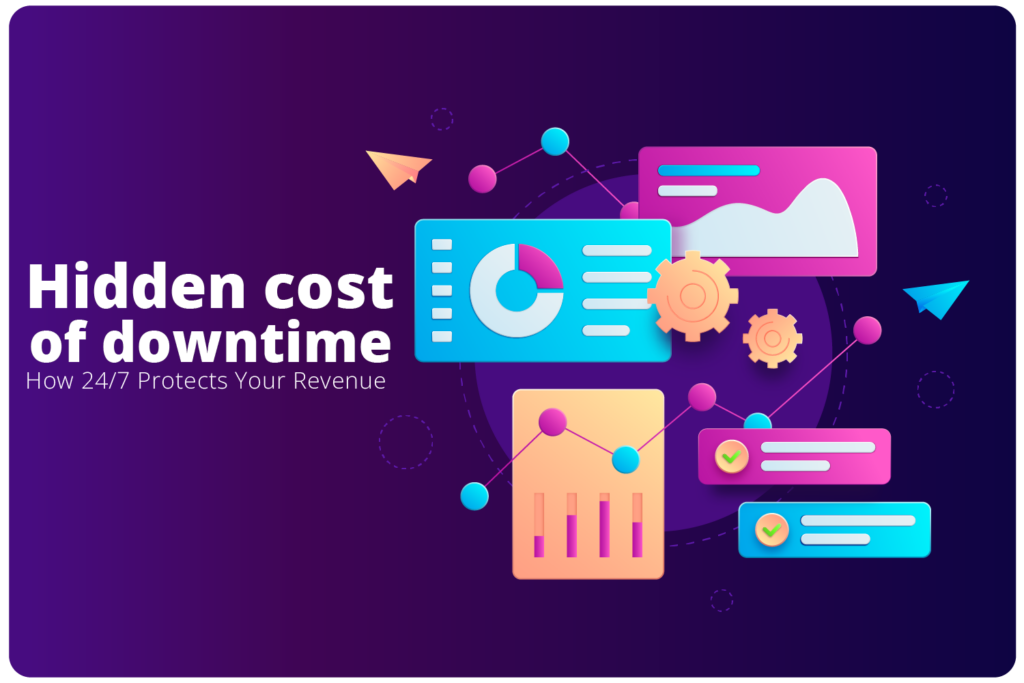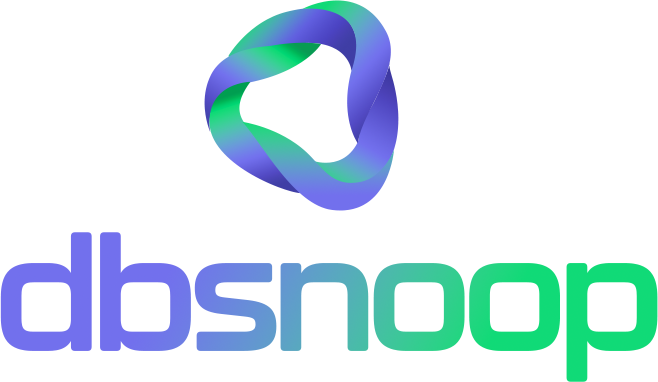

3 a.m. on a Saturday. A piercing alert breaks the silence. The e-commerce system is down. For the on-call DevOps and SRE team, a frantic race against the clock begins. But while they dive into logs to find the root cause, something far more expensive than their overtime is being lost. Every minute the system is unavailable is not just a lost sale; it’s a crack in customer trust, a drop in Google rankings, and an interruption that paralyzes other teams. The real cost of downtime is an iceberg, and lost revenue is just the visible tip.
Many companies calculate the cost of downtime simplistically: “If we make X per hour, every hour offline costs X.” This math is dangerously incomplete. It ignores the cascading costs that affect productivity, team morale, and, most importantly, the long-term brand reputation. Understanding these hidden costs is the first step to justifying the shift from a reactive mindset to a strategy of prevention and continuous 24/7 monitoring.
The Downtime Iceberg: What Lies Beneath the Surface?
To understand why prevention is much cheaper than remediation, we need to dissect the costs that don’t appear on immediate financial spreadsheets.
The Direct and Visible Cost: Lost Revenue
This is the most obvious one. If a customer cannot complete a purchase, the revenue is lost instantly. On service platforms (SaaS), downtime can violate Service Level Agreements (SLAs), resulting in contractual penalties and discounts for affected customers.
The Cost of Reputation and Customer Trust
This is the most dangerous cost. A customer who finds your site down during an important purchase will likely go to a competitor. Worse, they may never come back. In a connected world, a bad experience can quickly turn into an avalanche of complaints on social media, causing damage to the brand’s image that takes months or years to repair.
The Cost of Internal Productivity
Downtime rarely affects only customer-facing systems. When an internal database or an ERP stops, the domino effect is devastating:
- The sales team cannot access the CRM to close deals.
- The logistics team cannot process orders in the WMS.
- The marketing team cannot analyze data to optimize campaigns.
The entire company is put on hold, and the cost of idling hundreds of employees quickly adds up.

The Human Cost: Burnout in the Technical Team
For SREs, DevOps, and DBA teams, downtime means sleepless nights, interrupted weekends, and immense stress. A constant “firefighting” environment leads to burnout, decreases the quality of work, and increases talent turnover. Losing a senior engineer due to stress can cost much more than the loss from a single system outage.
The Paradigm Shift: From Reaction to 24/7 Prevention
The traditional monitoring model is reactive: a system fails, an alarm sounds, a human intervenes. This approach treats downtime as an inevitable event. True business continuity, however, comes from a proactive strategy focused on detecting the precursors to failure.
Critical problems rarely arise out of nowhere. They are preceded by warning signs: a query that starts to degrade, an increase in memory consumption, a disk latency that subtly grows. Basic monitoring tools do not connect these dots. An intelligent observability platform, on the other hand, is designed for this.
dbsnOOp: How Observability and a 24/7 Service Prevent Catastrophe
dbsnOOp combines an AI platform with a team of experts to transform the management of your data infrastructure, focusing on preventing downtime, not just detecting it.
Predictive Detection with Artificial Intelligence
dbsnOOp’s AI learns the normal behavior of your database environment. It creates a dynamic baseline of what a healthy operation looks like. When subtle deviations begin to occur—the first symptoms of a condition that could lead to failure—the platform proactively identifies them. This allows your team to investigate and resolve a performance issue before it turns into a full-blown outage.
The Human Layer of 24/7 Experts
An intelligent tool is powerful, but human experience is irreplaceable. dbsnOOp’s 24/7 service adds a layer of experts who not only receive the alerts but also interpret, validate, and often act on them. This means your team isn’t woken up in the middle of the night by an alarm, but rather informed that a potential problem has been detected and is already being analyzed by an expert. It’s the difference between having a fire alarm and having a team of firefighters watching over your house 24 hours a day.
Ensuring Business Continuity and Peace of Mind
By adopting a proactive and assisted 24/7 approach, you are not just buying a tool; you are investing in business continuity. You protect your revenue, your customers’ trust, and, crucially, the well-being and focus of your technical team. They are freed from the cycle of reaction and stress, able to concentrate on projects that drive innovation and growth, rather than just keeping the lights on.
The cost of downtime is real, but largely avoidable. Waiting for a catastrophe to happen and then reacting is a strategy that no modern company can afford to maintain.
Want to solve this challenge intelligently? Schedule a meeting with our specialist or watch a live demo!
Schedule a demo here.
Learn more about dbsnOOp!
Learn about database monitoring with advanced tools here.
Visit our YouTube channel to learn about the platform and watch tutorials.

Recommended Reading
- Banks and Fintechs: How AI Detects Fraud Before It Happens: The unavailability of a financial system, even for minutes, can cost millions. This article, focused on fraud detection, shares a vital principle: the need for real-time action. The same AI technology that prevents fraud is used to predict system failures, avoiding the downtime that freezes a fintech’s revenue.
- AI in Retail: How to Forecast Demand and Reduce Dead Stock: The main article discusses the cost of downtime in sales. This post on retail complements that view, showing how AI optimizes the other side of the equation: inventory. Ensuring system availability during demand peaks, predicted by AI, is crucial for not losing the revenue generated by these forecasts.
- Industry 4.0 and AI: The Database Performance Challenge and the Importance of Observability: A stopped production line is the most brutal form of downtime, with immediate revenue costs. This article explores how observability prevents stoppages in the industry. The lesson is universal: whether in a factory or an e-commerce store, proactive failure prevention is the central strategy to protect revenue.

